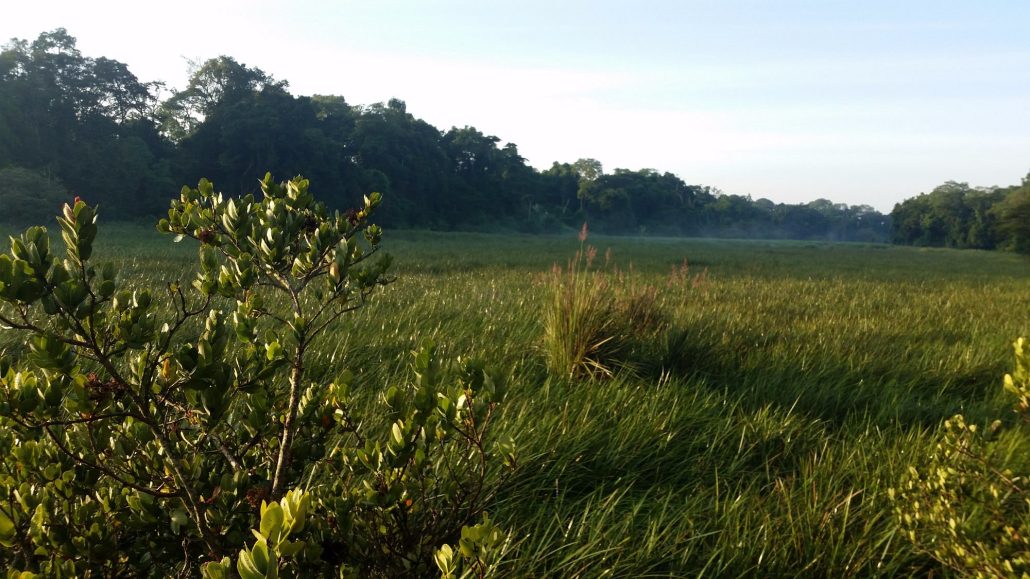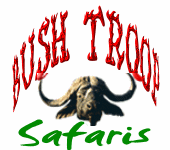Saiwa Swamp National Park
Saiwa Swamp National Park is Kenya’s smallest national park, covering only 3 square kilometers. Located near Kitale in Trans-Nzoia County, in the western part of Kenya, the park is an enchanting blend of forest, swamp, and wetland. It was established primarily to protect the rare sitatunga antelope, an elusive, semi-aquatic species found in this lush, swampy habitat. Saiwa Swamp is unique in its focus on wetlands and its small size, making it a serene and intimate destination for nature lovers who are drawn to its rich biodiversity and tranquil atmosphere.

Scenery
Saiwa Swamp National Park is characterized by its lush vegetation, tall trees, and thick swamp reeds. The Saiwa River winds through the park, creating a series of pools and marshes where wildlife thrives. The swamp’s dense greenery, complemented by open areas and towering trees, provides a captivating backdrop for visitors. The park is dotted with elevated wooden boardwalks and observation towers that allow visitors to observe the animals and birds that frequent the swamp without disturbing their habitat. The serene atmosphere, with only the sounds of nature, creates a peaceful and immersive experience.
Wildlife In Saiwa Swamp National Park
The main attraction of Saiwa Swamp National Park is the sitatunga antelope. This rare and shy creature has adapted to life in the swamp, with specially designed hooves that allow it to move easily through marshy terrain. The park is also home to other wildlife, including the de Brazza’s monkey, otters, bushbucks, and mongoose. Though large predators are absent from the park, it offers an opportunity to see these smaller, more elusive animals in their natural habitats. Reptiles such as snakes and monitor lizards can also be spotted along the swamp’s edge.
Birds in Saiwa Swamp National Park
Saiwa Swamp is a haven for birdwatchers, with over 370 species of birds recorded within the park. The swamp and surrounding forest provide a home to a variety of water birds, forest species, and migratory birds. Notable birds include the grey heron, lesser jacana, hammerkop, green-backed heron, and the African black duck. Visitors may also spot the Great blue turaco, kingfishers, sunbirds, and the papyrus gonolek. The diversity of birdlife makes Saiwa Swamp an excellent destination for bird enthusiasts looking to explore Kenya’s lesser-known birdwatching spots.
Weather and Climate
Saiwa Swamp National Park experiences a tropical climate, with the wet seasons occurring between March and May and again from October to December. The dry seasons, from June to September and January to February, are the best times to visit as the weather is more predictable, and wildlife is easier to spot. Temperatures are generally mild throughout the year, ranging from 20°C to 28°C (68°F to 82°F). The park’s swampy nature means it can be quite humid, especially during the rainy seasons. However, the forest canopy provides shade, and the elevated walkways make navigating the park easier even when the ground is wet.
Getting To Saiwa Swamp National Park
Saiwa Swamp National Park is accessible by road and is located about 22 kilometers from the town of Kitale in Trans-Nzoia County. From Nairobi, the park is approximately 380 kilometers (236 miles) away, and the journey takes about 6 hours by car. The main road to the park is well-maintained, though the last few kilometers may require a 4×4 vehicle, especially during the rainy season.
For those preferring to fly, there are scheduled flights from Wilson Airport in Nairobi to Kitale Airstrip, which is about 27 kilometers from the park. From Kitale, you can hire a taxi or use a private vehicle to reach the park.
Activities to Engage in Saiwa Swamp National Park
Saiwa Swamp National Park offers a range of activities that allow visitors to fully experience its unique environment:
- Walking Safaris: Saiwa Swamp is one of the few parks in Kenya where visitors can explore on foot. Guided walks along the elevated boardwalks offer a great way to observe wildlife and bird species without disturbing their habitat.
- Birdwatching: With over 370 bird species, the park is a birdwatcher’s paradise. Bring binoculars and enjoy spotting some of Kenya’s rarest and most colorful bird species.
- Wildlife Observation: The park’s watchtowers and boardwalks provide excellent vantage points for observing the elusive sitatunga antelope and other animals in the swamp.
- Nature Photography: The park’s beautiful scenery and abundance of wildlife make it a perfect spot for nature photography, offering plenty of opportunities to capture stunning images of Kenya’s diverse ecosystems.
Park Rules
To ensure the safety of both the wildlife and visitors, Saiwa Swamp National Park enforces the following rules:
- No littering is allowed within the park.
- Visitors should stick to the designated trails and boardwalks to avoid damaging the fragile swamp ecosystem.
- Feeding or disturbing the animals is strictly prohibited.
- Fires are not allowed within the park except in designated areas.
- Visitors should avoid making loud noises to preserve the park’s tranquil environment.
- Camping is allowed only in designated areas, and all camping equipment must be removed after use.
- Always obey the park ranger’s instructions for your safety.
Safety and Vaccination
Saiwa Swamp National Park is generally safe for visitors. The absence of large predators makes it a great place for walking and wildlife observation. However, as with most areas in Kenya, it is advisable to take malaria precautions, especially given the park’s wet and swampy environment. Antimalarial medication, mosquito repellents, and long-sleeved clothing are recommended for visitors. Other vaccinations to consider include yellow fever, hepatitis A, and typhoid, depending on the advice from your healthcare provider. Visitors should also carry sufficient drinking water and sunscreen, as some areas of the park may be exposed to sunlight.
